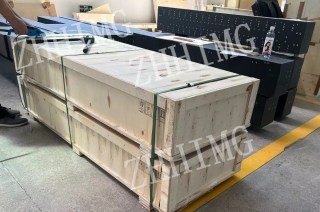Analysis of the Manufacturing Process of Granite Slabs
The manufacturing process of granite slabs is a complex and intricate procedure that transforms raw granite blocks into polished, usable slabs for various applications, including countertops, flooring, and decorative elements. Understanding this process is essential for manufacturers, architects, and consumers alike, as it highlights the craftsmanship and technology involved in producing high-quality granite products.
The journey begins with the extraction of granite blocks from quarries. This involves the use of diamond wire saws or diamond wire cutting machines, which are preferred for their precision and ability to minimize waste. Once the blocks are extracted, they are transported to processing facilities where they undergo a series of steps to become finished slabs.
The first stage in the manufacturing process is block dressing, where the rough edges of the granite blocks are trimmed to create a more manageable size. Following this, the blocks are cut into slabs using large gang saws or block cutters. These machines can produce multiple slabs simultaneously, enhancing efficiency and reducing production time.
After cutting, the slabs are subjected to a grinding process to achieve a smooth surface. This involves using a series of grinding wheels with varying grits, starting from coarse to fine, to eliminate any imperfections and prepare the surface for polishing. Once the grinding is complete, the slabs are polished using diamond polishing pads, which give the granite its characteristic shine and luster.
Finally, the slabs undergo quality control checks to ensure they meet industry standards. Any defects are identified and addressed before the slabs are packaged and shipped to distributors or directly to customers.
In conclusion, the analysis of the manufacturing process of granite slabs reveals a blend of traditional craftsmanship and modern technology. This meticulous process not only enhances the aesthetic appeal of granite but also ensures its durability and functionality in various applications. Understanding these steps can help stakeholders make informed decisions in the selection and use of granite products.
Post time: Nov-05-2024

